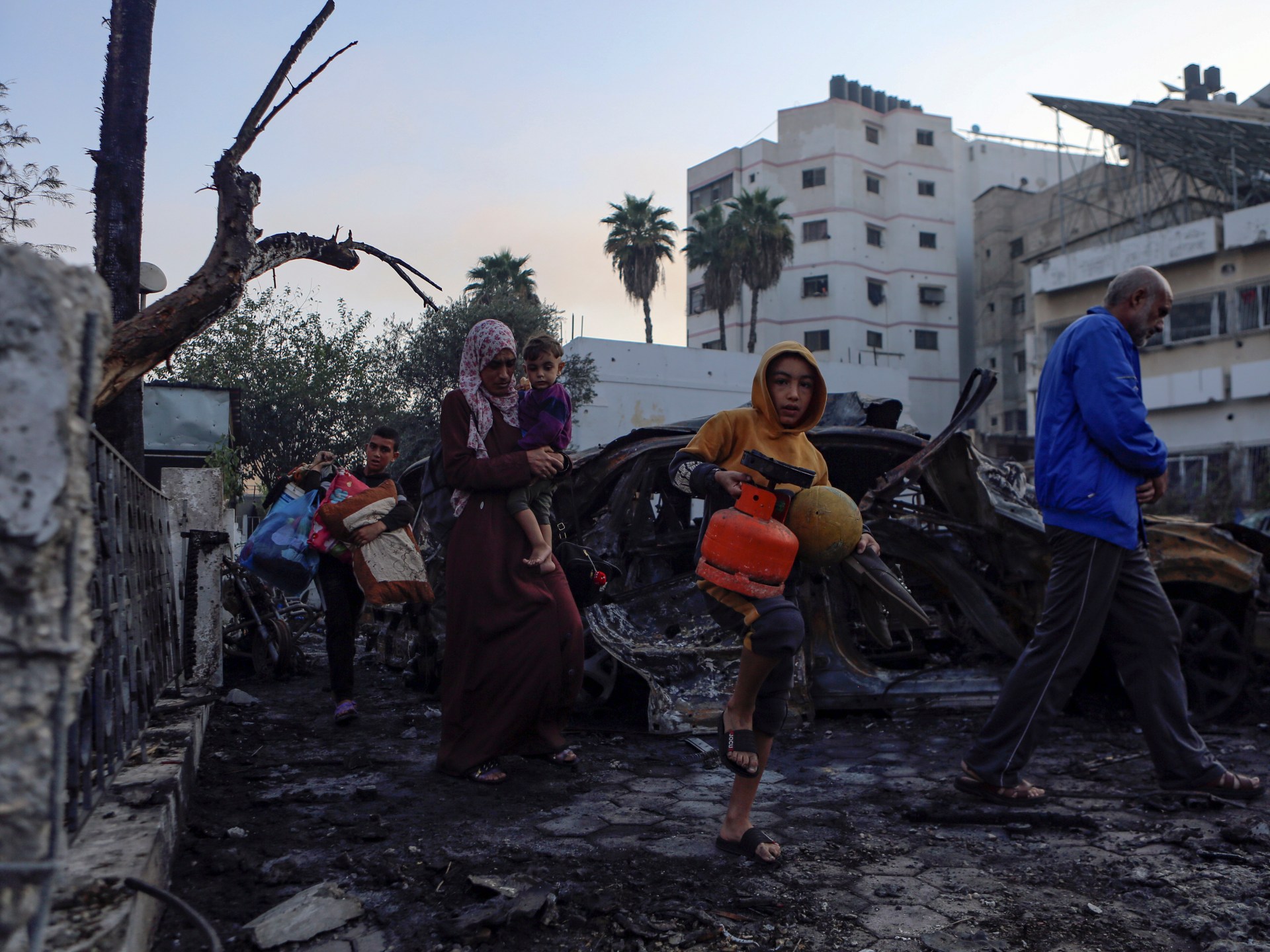
MELBOURNE, Australia (AP) — Authorities fear a second landslide and disease outbreak are looming at the site of a Papua New Guinea disaster that left scores of victims as water and bodies became trapped under tons of debris that swept across a village. Thousands have been urged to prepare to evacuate, officials said Tuesday.
A mass of rocks, earth and splintered trees devastated Yambali in the remote highlands of the South Pacific country when a limestone mountain collapsed on Friday. The rubble cover has become more unstable due to recent rains and rivers trapped between the earth and rubble, said Serhan Aktoprak, head of the International Organization for Migration mission in Papua New Guinea.
The UN agency has staff on the ground in Enga province, sheltering 1,600 displaced people. The agency estimates that 670 villagers have died. The Papua New Guinea government told the UN that it believes more than 2,000 people were buried. As of Tuesday, six bodies had been recovered from the rubble.
“We are hearing indications that there could be another landslide and that 8,000 people may need to be evacuated,” Aktoprak told the Associated Press.
“This is a big problem. The earth movement and debris pose a serious danger and in total 6,000 or more people could be affected,” he said. This includes villagers whose drinking water source has been buried and subsistence farmers who have lost their vegetable gardens.
“If this debris mass is not stopped and continues to move, it can increase in speed and wipe out more communities and villages further down the mountain,” Aktoprak said.
A UN statement later put the number of those affected at 7,849, including people who may need to be evacuated or relocated. According to the UN, 42 percent of those affected were children under 16.
Some villagers were evacuated on Tuesday, Sandis Tsaka, chairman of the Enga provincial disaster committee and provincial administrator, told Radio New Zealand. The exact number of residents is unclear.
As many people as possible would be evacuated on Wednesday, Tsaka said.
Relocating survivors to safer areas has been the highest priority for days. Evacuation centers have been set up on both sides of the pile of rubble, which is up to eight meters high and spreads over an area that the UN says is the size of three to four football fields.
Also disturbing were the scenes of villagers digging through the mud with their bare hands to search for the remains of their relatives.
“My biggest fear right now is that bodies will decompose and water will flow, which poses serious health risks related to infectious diseases,” Aktoprak said.
Aktoprak’s agency raised these concerns at a virtual meeting of national and international disaster relief workers on Tuesday.
The warning comes as geotechnical experts and heavy earthmoving machinery are expected on site shortly.
The government of Papua New Guinea officially asked the United Nations on Sunday for additional assistance and coordination of contributions from individual nations.
An Australian disaster response team arrived in Papua New Guinea, Australia’s closest neighbour, on Tuesday. The team includes a geo-risk assessment team and drones to help map the situation.
“Their role will be in particular to assist with geotechnical monitoring to determine the extent of the landslide and the instability of the ground and, of course, to find out where bodies are located,” said Murray Watt, Australia’s Minister for Emergency Management.
The Australian government has offered long-term logistical support to clear rubble, recover bodies and care for displaced people. The government announced an initial aid package of 2.5 million Australian dollars (1.7 million US dollars).
Earthmoving equipment from the Papua New Guinea military is expected to arrive soon after arriving from the city of Lae, 400 kilometers to the east, said Justine McMahon, country director of the humanitarian aid organization CARE International.
The landslide buried a 200-meter-long section of the province’s main highway. But the highway from Yambali via the provincial capital Wabag to Lae has been cleared, Enga officials said on Tuesday.
“To make matters worse, parts of the road were destroyed and the ground was unstable, but we are confident that we can fly in heavy equipment today,” McMahon said on Tuesday.
An excavator donated by a local contractor was the first heavy earthmoving equipment to arrive on Sunday to help villagers who had been digging for bodies with shovels and agricultural equipment.
Heartbroken and frustrated Yambali resident Evit Kambu thanked those trying to find her missing relatives in the rubble.
“Eighteen of my family members are buried under the rubble and the earth I’m standing on,” she told Australian Broadcasting Corp. through an interpreter.
“But I can’t recover the bodies, so I’m standing here helpless,” she added.
Yambali couple John and Jacklyn Yandam reported being trapped in the rubble for eight hours on Friday morning before being dug out by neighbors.
Large fallen boulders had formed a barrier that prevented the couple from being crushed by falling debris in their home, but without the help of their neighbors, they would have remained trapped.
“We thank God for saving our lives at that moment,” the woman told Papua New Guinea’s National Broadcasting Corp., referring to the mountainside that collapsed at 3 a.m.
“We were sure we were going to die, but the big rocks didn’t crush us,” she added.
Australian Deputy Prime Minister Richard Marles said an Australian Air Force C-17 Globemaster – a four-engine transport aircraft capable of carrying 77 tonnes (85 US tons) of cargo – was already bringing relief supplies from Australia to Papua New Guinea’s capital, Port Moresby.
Two smaller turboprop transport aircraft of the Australian Air Force were already in Port Moresby, 600 kilometers southeast of the destroyed village.
“We want to do more, but to be honest, this is also about not overburdening a system that is currently under a lot of pressure,” Marles told parliament.
The smaller C-130 Hercules and C-27J Spartan transport aircraft will fly supplies from the capital to Mount Hagen, the capital of the Western Highlands province. From there, the cargo will be transported overland to the neighboring province of Enga.
That plan was derailed by news that a bridge between Mount Hagen and Wabag collapsed on Tuesday, officials said. The cause of the collapse was not explained, but there was no connection to the landslide.
A diversion would extend the journey by two to three hours, the immigration authorities said. Urgent repair work on the bridge is underway.
Papua New Guinea is a diverse developing country with 800 languages and 10 million people, most of whom are subsistence farmers.






Recent Comments